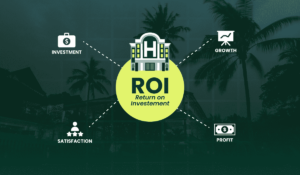In Agile, we separate the Product Owner duty from the development management. We want people who can scrutinize and evaluate the business value to make the business coherent to others who understand their respective work and know the work’s value to implement what needs to be done on priority. What needs to be done first is something known to the people who mainly handle the technical part of the process. In the Agile Process, we encounter a method where everyone’s role is specified at the beginning of the project. Even though the role of a Scrum Master is often misunderstood as the Product Owner, thus everyone must understand which job belongs to which person.
Let us tell you, Who is the Scrum Master?
A Scrum Master is a professional who helps usher a team using Agile Project Management through a project route. A Scrum Master facilitates all the communication and collaboration between showing leadership and being a team player to ensure a successful outcome.
As per the Scrum Process Framework, Scrum Team consists of a Product Owner, the Development Team, and a Scrum Master. Scrum teams are always self-organizing and cross-functional teams. So product owner and scrum master can be the same person? The answer is “yes” but it’s not easy to comprehend two roles at the same time.
So in this article, let us discuss who is the Product owner and who should be a product owner?
Who is the Product Owner?
As per the Scrum Guide, the Product Owner can generally be any person who is primarily responsible for exponentially increasing the product value and the work done by the development team. In the Agile Process, the role performed by a Product Owner can be similar to a business strategist, product designer, market analyst or Project manager. We often might see the Product Owner performing a lead role in many fields of Product Development Concept. The Product Owner is answerable to both sides of a coin. On one side, he has to annotate stakeholders’ requirements to inform his team regarding the same and explain how his team’s workflow should be regarding a specific project. On the other side, he has to scrutinize the market’s current requirement or situation and make plans to release strategize on an equal basis for the stakeholders and the technical team to let everyone have a clear understanding of the plan and its structure.
Now let’s nullify this for you,
Whenever you come across a Product Manager, you must have noticed that this person is appointed to define the product and ask his product development team for features while talking to his customers. See how the last part was about talking to customers. This gives us an idea that this person is often out of the office; thus, the role of the project manager is an outward-facing job, not an internal one.
While the product owner works with the team to define and refine features, strategise plans, oversee the backlogs, and know when to release the product. Thus it becomes clear to us that the role of a Product Owner is an inward-facing job. ( just for completeness, we would like to add that job of a business analyst quite fits with the role of a Product Owner, as they are both inward-facing functions. )
Importance of the Product Owner
In a mosaic environment, the Product Owner must develop all feedback on the product. They do this by linking the feedback into a backlog for the product while finding the best possible value. It is the need of the Product Owner to ensure alignment with many different stakeholders. They can be customers from operations, infrastructure, or sales. The Product Owner needs to review the timeline, budget, potential capabilities and marketplace of the product to devise the best possible route for the completion of the project. Although the Sprint Review is the most logical place to devise this. But the Product Owner has to tackle other problems that exceed the world of Scrum. Thus a Product Owner should always strive to lead the team in the direction where the product’s growth is sure, with the help of the Scrum Team and its stakeholders.
Even though we now know the importance of a Product Owner and his duties in a particular dialect. Let us show you what is the difference between the Component Owners and the Product Owners to give you clarity on this subject.
Component Owners vs. Product Owners
Earlier in this article, we mentioned how the project manager often describes the roadmap to his fellow team members. The roadmap for the product is the input required for multiple Product Owners and their Scrum Teams to understand their role in it. Each Product Owner is designated as a component of a product. This results in the Product Owner being the component owner on a real-time basis. Well, some might say this is an Anti-Scrum pattern. As we already said, this setup is ineffective in a complex environment. Since your path is forbidden due to the problem faced by teams when it comes to making detailed long-term plans. But there’s still a lot more to be understood here. Component Owners might have a good hold over their designated component. But they lack to see the overall picture. Something is known to be the summation of all components. With that not in place, they become entirely ineffective to define which component is the most important one concerning others. The only person who has the knowledge to bifurcate is the Product Owner. The only one who has oversight on everything taking place for the successful outcome of the product as a whole.
Before we divulge into knowing the responsibilities of a Product Owner, we need to discuss something more substantial. Now you must be thinking about what could be more important than that.
Well, there is,
On an experimental basis, the product manager becomes your Product Owner.
In that condition, the things that are likely going to happen are as follows :
Project Manager: When a project manager becomes the Product Owner (PO), his respective team won’t get enough time to discuss one-on-one with the product owner. Thus the team might not understand the backlog or the release criteria. Thus we don’t recommend this person to fill in the PO shoes.
Because of the respective reasons
When a project manager becomes the Product Owner,
- It is hard for him to build relationships with his team.
- Manage their problems.
- Remove the impediments that the team needs.
- Still, be able to have one-on-one discussions.
Because for the give-and-take model to prevail in the environment, the Product Owner and his team should deliver value without thinking about ranking.
Thus one-on-one discussions are imperative for the team’s progress. A conversation like this is critical. A Product Owner should never make it difficult for his team to have honest discussions with him. The traditional approach will likely fail in this role. Thus a Product Manager should reconsider before deciding to be the Product Owner as it is complicated for the team to challenge their managers.
Again on an experimental basis, let’s say the Scrum Master tries to fulfill the Product Owner’s job.
Scrum Master: When a Scrum Master takes upon the role of the Product Owner (PO), it usually ends up in atrophy. While these roles are often combined, they are easily misunderstood. Scrum master who often deals with the development team, when he also tries to hack the solution out of the customers or stakeholders, may not have access to valuable feedback. Without that actionable feedback, the team breaks an un-validated product down into smaller and smaller pieces delivering each part incrementally. While total deposition of a product is an improvement over a sole large delivery, the reality is that it’s just a more efficient way to deliver the wrong product. This all happens when the Scrum Master
- misses out on the coherent vision for the team
- Lacking customer access or a true vision for the product
- Trying to make sense out the stack of backlog with the items they find most interesting.
This all results in the delivery of low-value work. And their team makes minor enhancements to existing features or wastes time on cleaning low priority bugs, but in the end, no meaningful work is achieved.
Thus even if your team may be producing high-quality work, it doesn’t mean it’s making a meaningful impact on the end product.
And Lastly, on an experimental basis, let’s say the Technical Head of the Team fills in the shoes of the Product Owner.
Technical Head: Technical Head becomes the Product Owner (PO). While misunderstood by many, the Product Owner represents the person rather than a role in the Scrum Process. This means the Product Owner would have the technical knowledge and can work on the technology related to any product. But this doesn’t mean that the Product Owner needs to perform technical tasks in the Scrum Process like coding or testing, etc. Thus when a technical head takes up the job of (PO), he cannot communicate the client’s vision to his respective team—resulting in chaos.
Conclusion
In other words, there is no definitive answer to this.
Our only recommendation would be appointing a person who holds a key stake in the stakeholder share of the company. He should be someone who should take up this job. The Product Owner has to take different roles, responsibilities and attributes to ensure the project’s successful outcome.






Be First to Comment